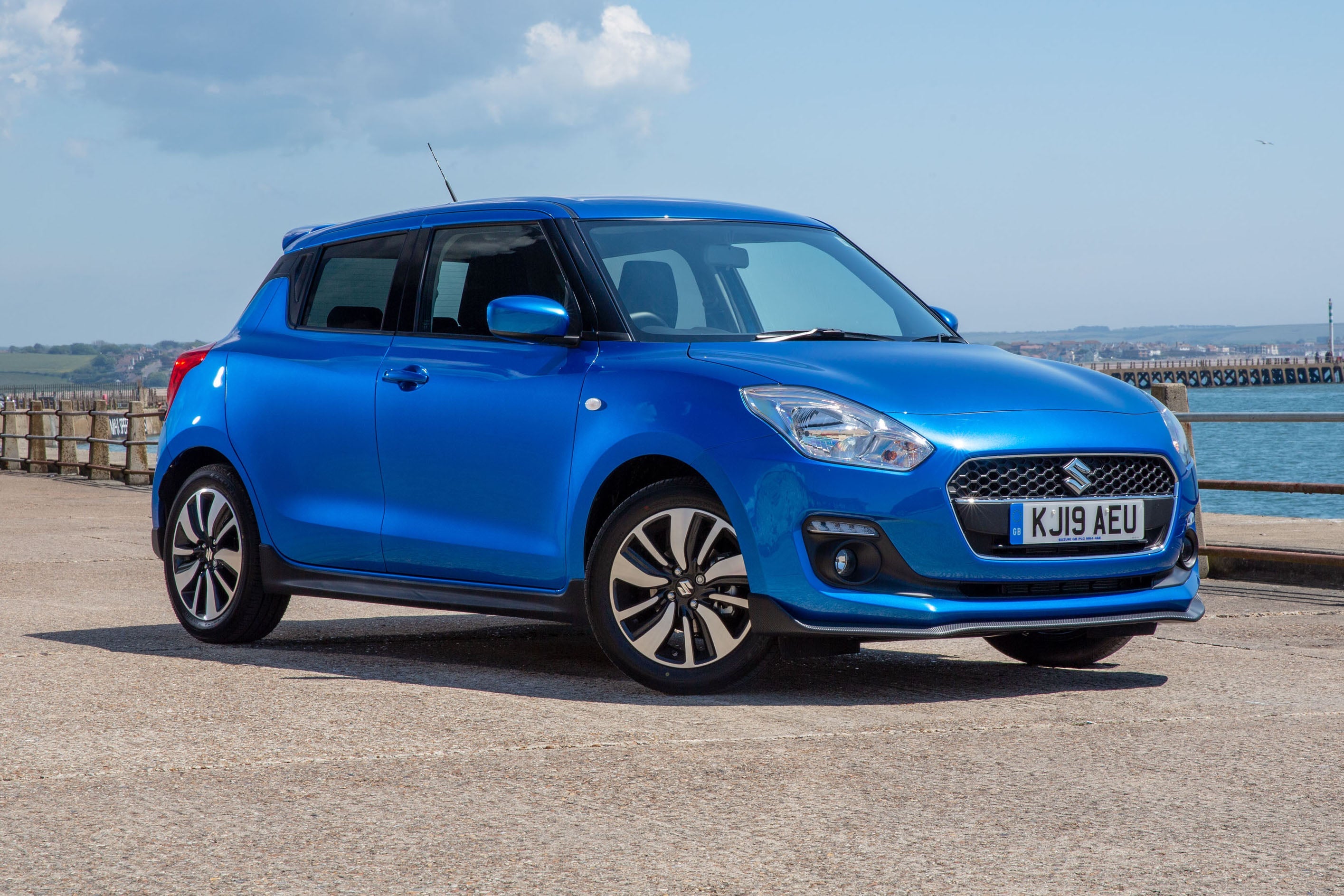Suzuki Swift (2017-2024) Review
Written by Andrew Brady
Quick overview
Pros
- Stylish, with plenty of kerbside appeal
- Really good fun on twisty roads
- Engines are refined and economical
Cons
- Ride is rather unsettled
- Interior plastics feel a bit cheap
- Small boot
Overall verdict on the Suzuki Swift
"The Suzuki Swift isn’t perfect, with a small boot, an unsettled ride, high insurance costs and an iffy safety record. However, it’s a very likeable car thanks to its funky styling, thrill-a-minute handling and rev-hungry engines, and there’s much more to like besides. Utterly charming."
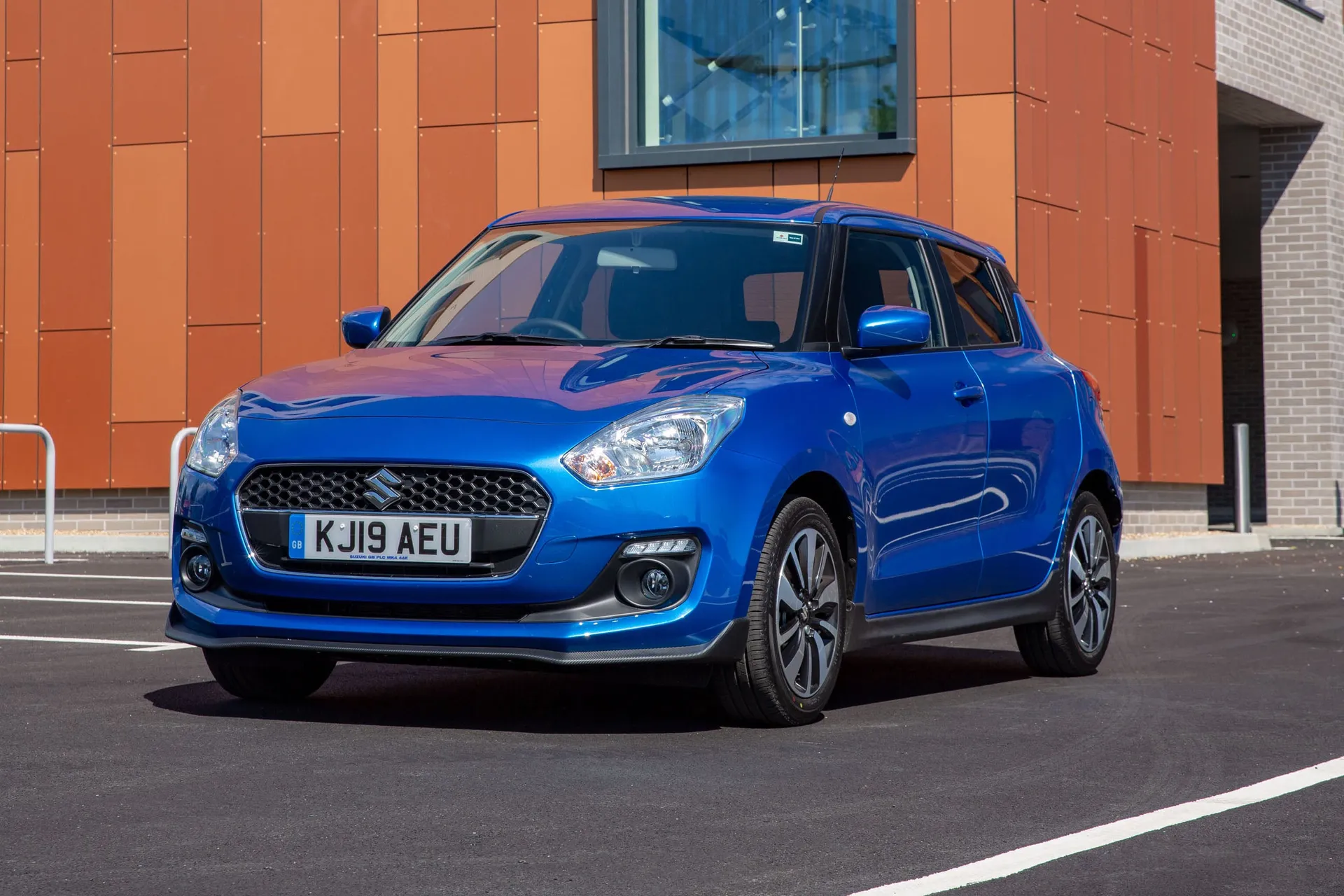
In this Suzuki Swift review we'll be taking a closer look at one of the supermini offerings that is frequently forgotten behind the big players from Ford, Vauxhall and Volkswagen. The Fiesta, Corsa and Polo sell in big numbers and with good reason, but the Suzuki Swift offers something a little different for those who aren't bothered about following the crowds.
This thing really is lots of fun. First off, it looks great thanks to its sleek lines and its cutesy features. Secondly, it’s an absolute hoot on the road. The rev-hungry engines tempt you into thrashing them mercilessly, and when you chuck the car into a bend, it rewards you with good grip, meaty-feeling steering and really impressive balance. It’s virtually impossible to drive this car without smiling.
It’s good in other ways, too. The engines are smooth and quiet, and deliver good efficiency figures, there’s decent room for four in the passenger compartment, and all but the entry-level version come with a decent amount of kit.
However, doubling down on fun does involve a few sacrifices in other areas. Some drivers will find the ride rather unsettled, the boot is quite small and the cabin feels pretty plasticky. Still, drivers who are young and care-free are unlikely to care too much about that. There's even a performance(esque) version in the form of the Suzuki Swift Sport.
Sadly, the Suzuki Swift does have one more rather serious - not to mention strange - achilles heel that makes it completely unsuitable for young drivers, and that’s its preposterously and catastrophically high insurance groupings. Parents won’t much like the fact that the Swift has struggled in Euro NCAP crash tests, either. It’s such a shame, because otherwise, it’s absolutely perfect for that audience.
Still, if you’re not so young, but you’re still young-at-heart, then there’s a lot to like about the Swift. It’s a very likeable car that’s bursting with character, and the people it suits will absolutely love it.
Looking for a used car for sale? We've got 100s of Suzuki Approved Used Cars for Sale for you to choose from, including a wide range of Suzuki Swifts for sale. If you're looking for the new version, you need our Suzuki Swift review.
Is the Suzuki Swift right for you?
Are you a fun-loving type, but you need to buy a reasonably sensible car on a budget? If you are, then the Suzuki Swift might well be the perfect compromise.
The sensible box is checked by the fact that it’s roomy for four, it’s solidly built, it’s impressively economical and it costs signifcantly less to buy than many rivals. It also has the fun bit covered thanks to its stylish looks, its chuckable handling and its raucous, rev-hungy engines.
It’s not the comfiest car of its type, and not the best on interior quality, either, but many buyers won’t mind too much about that. You’d think that all this would make the Suzuki Swift great for young drivers, then, but hold your horses. Unfortunately, the Swift costs a comparatively huge amount to insure, which will rule it out for many.
What other cars are similar to the Suzuki Swift?
Despite the incessant rise of the SUV, the supermini is still the most popular type of car there is, so there are loads and loads of familiar names here. The most familiar include the Ford Fiesta, Vauxhall Corsa, Volkswagen Polo, Peugeot 208, Renault Clio, Toyota Yaris, Nissan Micra and SEAT Ibiza. However, the Swift sits at the more affordable end of the scale, so it’s closer in price and feel to rivals like the Skoda Fabia, Citroen C3, Kia Rio, Hyundai i20 and Dacia Sandero. This version of the Swift was replaced with a new iteration in 2024, so it's now only available as a used car.
Comfort and design: Suzuki Swift interior
"Look at the Suzuki Swift’s dashboard, and everything sits where you expect it to. Entertainment system top middle, ventilation controls below that, a few buttons on the steering wheel and a few more on the dashboard beside it."
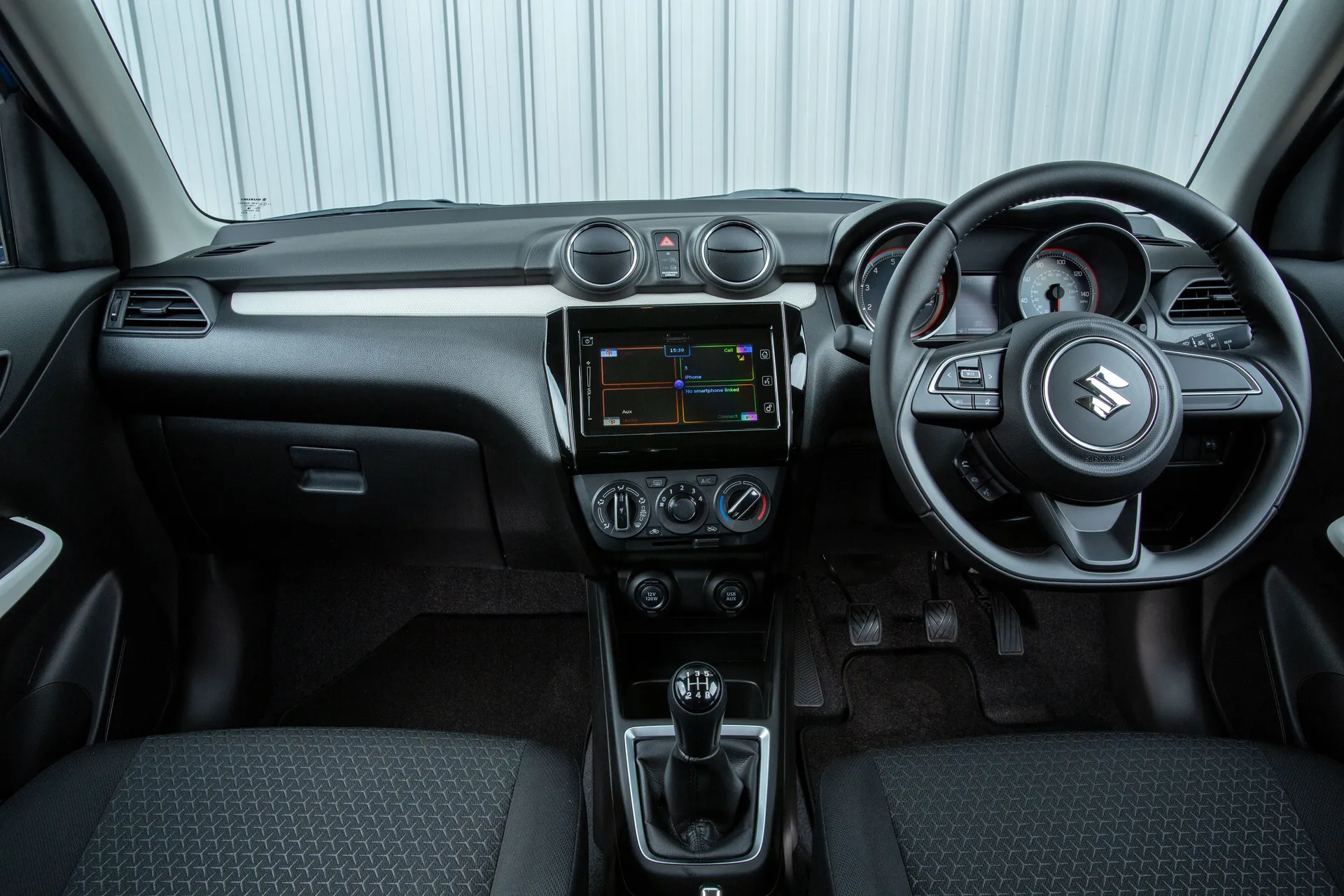
All very conventional stuff. What’s more, pretty much all the controls - even the ones on the steering wheel - are comparatively large and well marked, making them easier to use at a glance. Ergonomically, then, there’s not a lot wrong with the interior design.
Sadly, you can’t say the same about the driving position. The driver's seat is pretty comfortable (although it may be a little flat for some tastes), and it has lots of movement to help you fine-tune your seating position, but unless you go for the range-topping SZ5 model, the steering wheel only moves up-and-down, not in-and-out.
It means some people might struggle to hit the position they want. What’s more, the vast majority of rivals these days include this extra plane of adjustment in their standard kit.
The windscreen is big, tall and upright, and because it’s flanked by skinny pillars, your view at the front is really good. Your rear screen is a decent size, too, but because the rear pillars are thick and the rear side windows are rather small, your over-the-shoulder view isn’t as great as it might be. No version gets rear parking sensors, either, but don’t panic: a rear-view camera is provided in Suzuki Swift SZ-T trim and upwards.
Quality and finish
When you first climb into the Suzuki Swift, things don’t look too bad at all on this score. The grey plastics that most of the interior is fashioned out of are broken up with various silvery or shiny black trims, adding a bit of visual variety and giving a fairly smart look. The stitched leather steering wheel feels nice and chunky in your hands, too.
Place your hands elsewhere, though, and the smart feeling quickly begins to deteriorate. Although the materials on show look smart at first glance, wandering fingers will detect that pretty much all them are hard, shiny and pretty short on tactile appeal.
Granted, hard plastics are by no means uncommon in the supermini class, but most rivals at least attempt to inject some lustre by putting some soft-touch surfaces in the places where your eyes and hands fall most often. No such attempts are made in the Suzuki Swift, however. Having said that, the materials do appear very durable and the standard of assembly is much higher than the standard of the materials.
Infotainment: Touchscreen, USB, nav and stereo in the Suzuki Swift
If you go for an early Suzuki Swift in the entry-level SZ3 trim, you’ll get a stereo with a CD player (remember them?!), DAB radio, Bluetooth and four speakers, but with no central screen, it makes the interior feel a little bit basic by modern standards. From SZ-T trim upwards, though, you get a 7.0-inch touchscreen that comes with Apple Carplay, Android Auto and Mirrorlink, meaning you can use your phone’s apps and navigation functionality through the car’s screen. It makes the world of difference. A facelift in 2020 saw the SZ3 model replaced with the SZ-L model as the entry-level car, and this had the higher-grade system as standard.
Suzuki Swift SZ5 trim adds a couple more tweeter speakers and built-in sat-nav, but to be honest, it’s rather clunky to use, so you’re probably better off sticking with your phone’s software. The touchscreen system isn’t ideal in other ways, either. Some of the on-screen icons are a little bit small and fiddly to hit without really concentrating, and the graphics aren’t as crisp or as slick as they are in the best rivals.
Space and practicality: Suzuki Swift boot space
The Suzuki Swift is 3840mm in length and 1735mm wide, making it one of the smaller superminis available. You wouldn’t expect any supermini to be the last word in practicality, but you would at least expect it to do a decent job compared with its diminutive rivals. The Swift's compact size hinders it somewhat in that respect.
There’s very decent space up front, and a fairly average amount in the back by class standards. Six-foot passengers will be able to sit comfortably behind a driver of a similar scale, but with contact between their knees and the front seats, or their head and the headlining.
Yes, the biggest superminis provide a bit more headroom and legroom, but even these are too narrow to sit three across the rear bench comfortably, a feat that the Swift also struggles with. Two bulky child seats will fit easily, though, and there are ISOFIX mounting points with which to secure them.
The boot is rather more disappointing, sadly. It’s appreciably smaller than many others in the class: you’ll have room for a weekly shop, but not much more. There’s a big lip to haul items over, too, and when you drop the 60-40 split-folding rear seats to extend your cargo space, the backrests lie at an angle and the load area also has a large step in it.
Handling and ride quality: What is the Suzuki Swift like to drive?
"If you enjoy flinging your car around, you’ll love the Suzuki Swift, because it’s very, well, flingable. The steering is quick and nicely weighted, and there’s plenty of grip, so the front of the car turns quickly and eagerly."
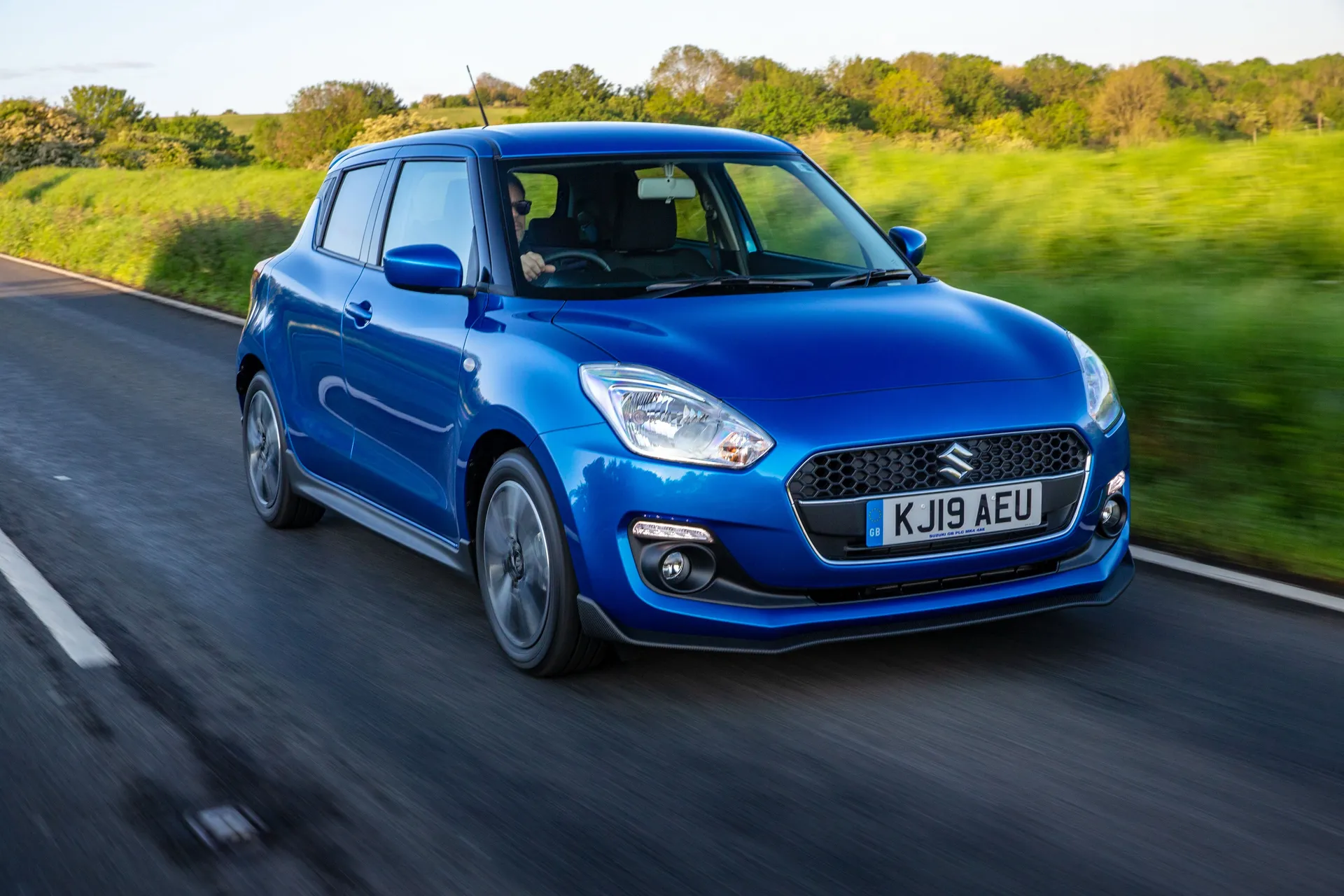
You will detect a bit of body roll when you turn in initially, but things feel more controlled after that. True, if you’re looking for ultimate dynamic polish, the Ford Fiesta does it better, but the Suzuki Swift’s up-and-at-’em nature and neutral balance still make it a very enjoyable car to drive. And that’s whether you go for the front-wheel-drive version or the four-wheel drive version: you’ll actually notice very little difference between them on the road.
That said, it’s not the most comfortable car of its type by any stretch. It stops short of being uncomfortable, but pockmarked urban streets will jostle you around more than they will in many other superminis, and sharped edged ruts and potholes will result in more of a thud. Things improve as you go faster, but the Suzuki Swift still isn’t as settled as many rivals on the motorway.
What engines and gearboxes are available in the Suzuki Swift?
All later Suzuki Swifts of this generation came with a 1.2-litre mild hybrid petrol engine offering 83PS. That's not a lot of power but this is a small and relatively light car, so it gets along well enough and as long as you don't expect too much of it you'll find it capable in town and strong enough to keep up with the swing of things on the motorway.
If you're considering an older Swift, we'd recommend the 1.0-litre engine - tagged ‘Boosterjet’ - that was later discontinued. It produces more power with 111PS, and because it has a turbocharger, it has much more low-down urge than the 1.2, making your progress easier and more relaxed: you’re not constantly thrashing the engine and snicking through the gears.
Most cars come with a five-speed manual gearbox, which is the choice we'd recommend. A CVT automatic is available on SZ-T and SZ5 Suzuki Swifts, but it sucks some of the life out of the engine.
Refinement and noise levels
Most of the time, the Suzuki Swift does reasonably well. Even when you thrash it hard - which you often have to - the 1.2-litre engine stays reasonably quiet and composed, and sends very little vibration through to the cabin.
The 1.0-litre is similarly quiet and smooth, and because its extra flexibility automatically gives it a less frenetic character, the experience is immediately more relaxed. Both stay reasonably muted at 70mph, too, but you will hear the tyres rumbling beneath you and the wind whistling around the door seals. Not the most civilised motorway cruiser, then, but it’s nothing that’ll trouble most buyers.
Safety equipment: How safe is the Suzuki Swift?
All Suzuki Swifts get six airbags, electronic stability control, two ISOFIX child seat mounting points, tyre pressure monitoring and a pot of tyre sealant (no spare wheel, though). SZ-L Swifts get radar brake support as standard, but ideally you'd upgrade to the SZ-T or above as this adds things like lane departure warning, weaving alert and traffic sign recognition.
Nevertheless, the SZ5 Swift still only received a Euro NCAP score of four (out of five) stars when the industry body smashed it to pieces. Lower-grade Swifts, meanwhile, scored just three stars due to their meaner safety kit. It's by no means the worst score in the class, but it's also far from the best.
MPG and fuel costs: What does a Suzuki Swift cost to run?
"As you might expect economy is a relative strong suit for the Suzuki Swift, with the core 1.2-litre manual claiming an official figure of 59.7mpg. Even the automatic offers 55.3mpg."
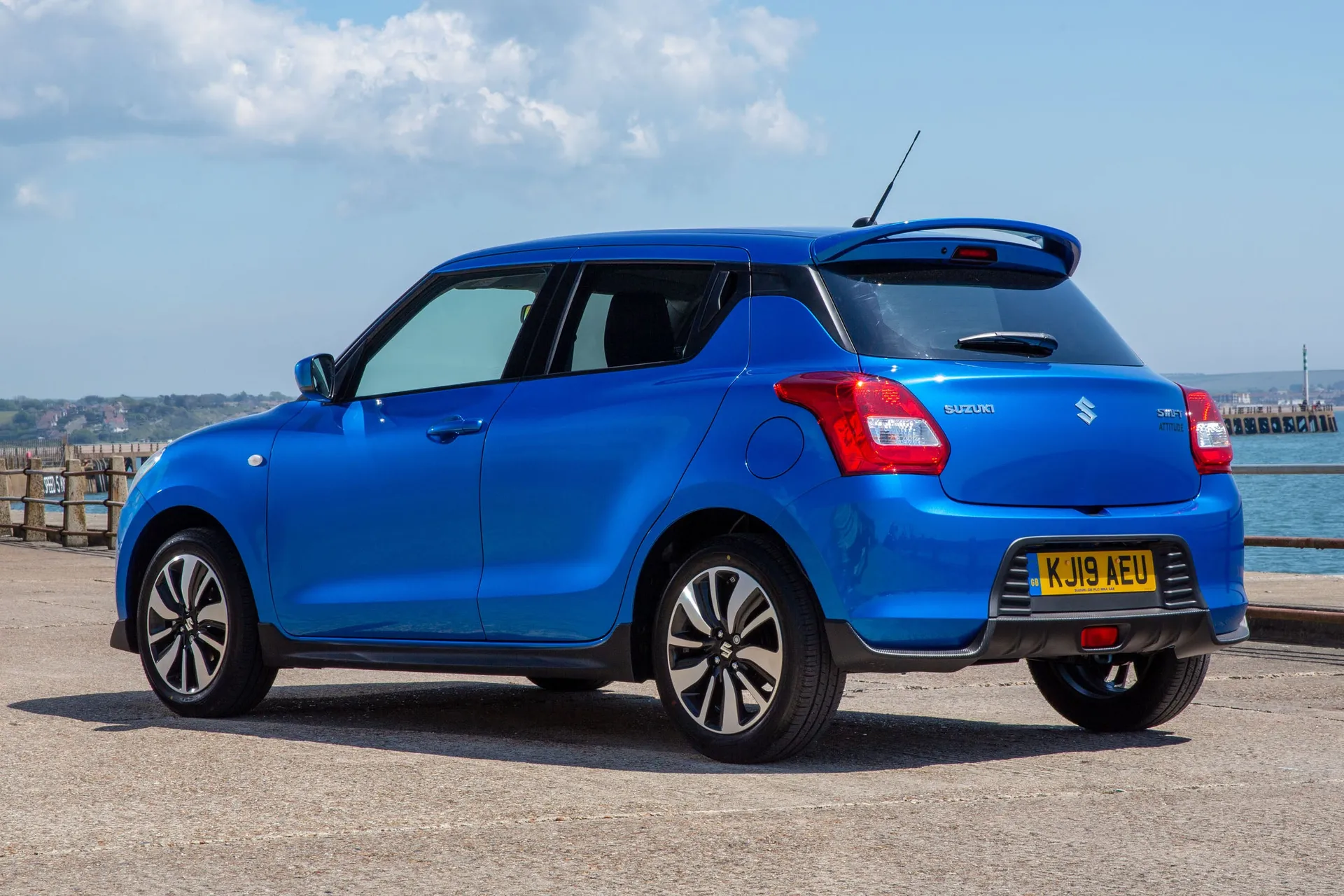
Bear in mind, though, that these are figures obtained from laboratory tests, and replicating them in the real world will be extremely difficult and will require extremely gentle driving. And in a car that’s as fun and as flingable as the Swift, you’re often tempted to not drive gently.
How reliable is the Suzuki Swift?
There's good news here for potential buyers. In the 2023 HonestJohn.co.uk Satisfaction Survey, Suzuki placed second overall in the list of the most reliable car brands (behind only Lexus, which ALWAYS places first), scoring an impressive 9.75 out of 10 for reliability. The even better news is that this generation of the Swift was the brand's stand-out performer, with owners praising its build quality and reliability.
Suzuki did slightly less well in the overall satisfaction standings, coming 17th out of the 29 manufacturers considered, but that's certainly not a bad performance for a relatively small brand.
Insurance groups and costs
If you buy an affordable car, chances are you want it to be affordable to insure, too, and most superminis are. The Swift, however, isn’t. First of all, let’s get some context. A Ford Fiesta’s insurance groupings range from 2 to 15 (group 1 being the cheapest and group 50 being the most expensive).
The Swift, meanwhile, starts at 19 and rises to 27, or 35 if you count the most powerful Swift Sport model. These ludicrous rates are likely to be because of high repair costs and the difficulty of sourcing replacement parts, but that’ll be of no consequence to those left paying hefty premiums. Shame, because otherwise, the Swift would be a really appealing car for young drivers.
VED car tax: What is the annual road tax on a Suzuki Swift?
This generation of Swift was released in 2017, after the Government announced new VED tax laws that applied a flat rate of annual tax to petrol and diesel cars. No version is expensive enough to be subject to the hefty £390 surcharge for expensive cars, and as such, you’ll simply pay the flat rate of £190 per year on all versions. The exceptions are the hybrid versions, which qualify for the reduced £180 rate.
How much should you be paying for a used Suzuki Swift?
"This generation of Suzuki Swift was replaced in 2024 with an all-new model, so it's now only available as a used car. By the time it went off sale, prices started at more than £17,000, so it wasn't the bargain car it once was, but it was still competitive by class standards."
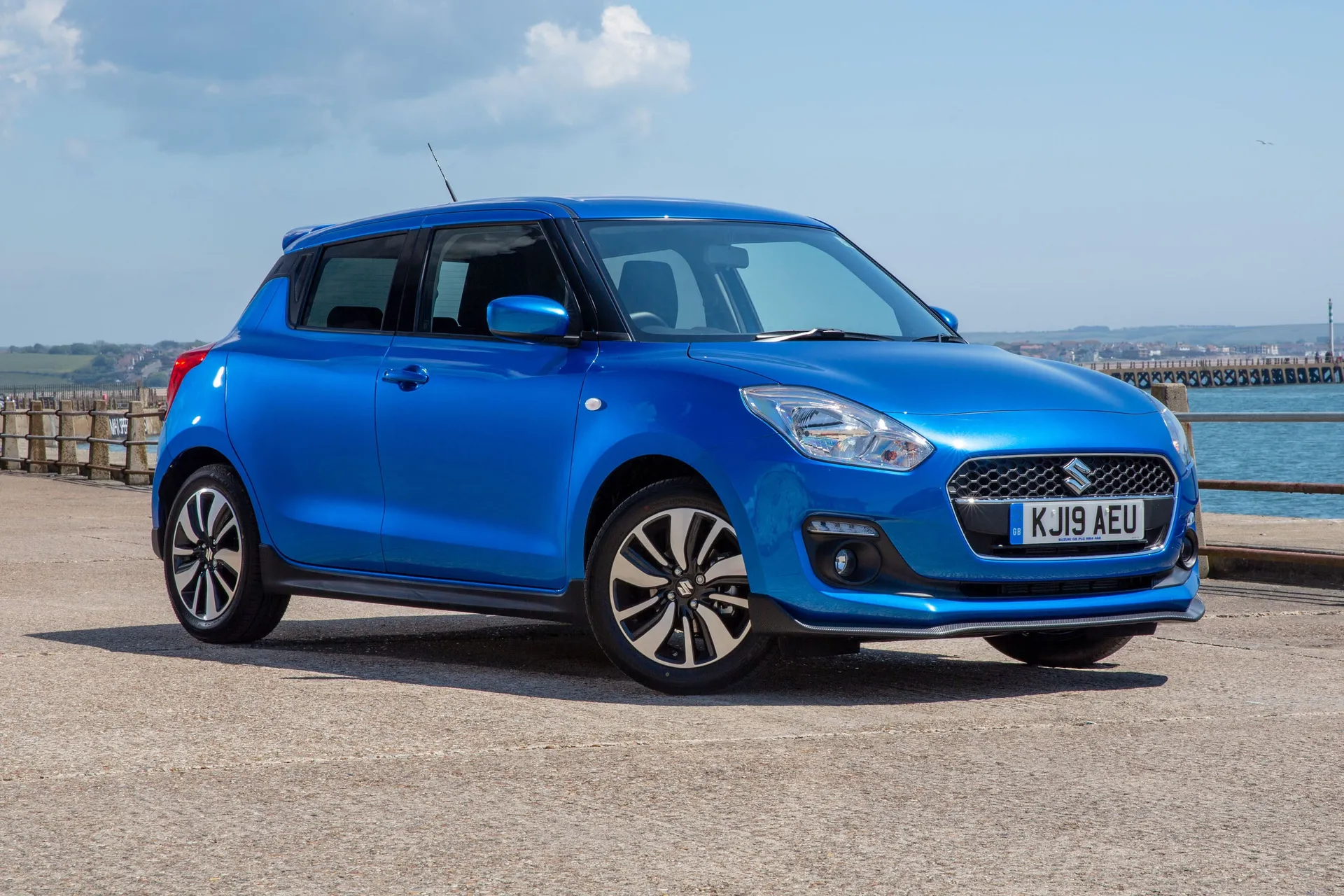
Early cars from 2017 or 2018 can now be had for less than £7,000, which feels like an awful lot of car for the money, and these are most likely to have the more appealing Boosterjet, engine, too. Do be aware, though, that these examples are like to be wearing around 80,000 miles or more.
If you're after something a bit younger, then year-old examples with four-figure mileages can be had for around £14,000.
Trim levels and standard equipment
Early on in the Swift's life, the entry-level trim was SZ3, but we'd dismiss these models out of hand on the used car market because they have an infotainment system that's far too basic.
Later on, the Suzuki Swift SZ-L became the entry-level model, and this offers the smartphone link that adds Apple CarPlay and Android Auto, plus 16-inch polished alloy wheels, LED headlights and taillights, radar brake support, adaptive cruise control, DAB, air conditioning, a leather steering wheel and rear privacy glass.
The Suzuki Swift SZ-T adds painted alloy wheels of the same size, lane departure warning and prevention, weaving alert, traffic sign recognition, and rear parking sensors.
Top of the range is the Suzuki Swift SZ5 which adds sat nav, side repeaters in the door mirrors, rear electric windows, a rear view camera, the useful telescopic steering wheel adjustment, keyless entry and start, climate control and two additional 'tweeter' speakers.
Ask the heycar experts: common questions
Is there a Suzuki Swift diesel?
Do I really need a Swift with four-wheel drive?
What is the difference between the Swift and Swift Sport?
Is the Suzuki Swift reliable?
Where is the Suzuki Swift made?
Get our latest advice, news and offers
Keep me updated by email with the latest advice, news and offers from heycar.
By submitting you agree to our privacy policy
